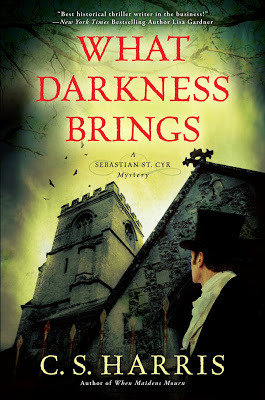C.S. Harris's Blog, page 24
December 17, 2012
Christmas in New Orleans
We don't often see photos of New Orleans decked out for Christmas. So come with me, and let's go for a stroll. We'll start with St. Louis cathedral and Jackson Square, the heart of the city in the days when we were a French and Spanish colony:
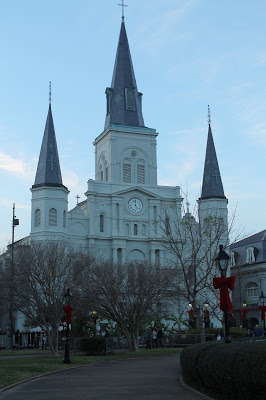
Then we'll cross the street and climb over the levee to the Mississippi River, where the steamboat, the Natchez, is decked out for the holidays.
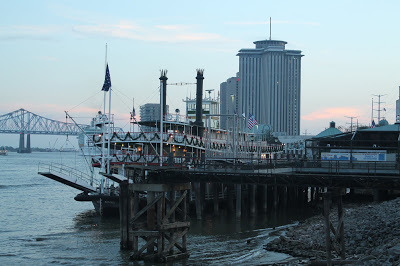
While we're down in the Quarter, we might as well pop over toward Bourbon Street...
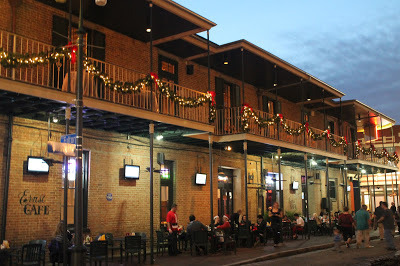
And, not too far away, on the Uptown side of Canal, is the old Fairmont Hotel. Now the Roosevelt, it's long been famous in New Orleans for its elaborate Christmas decorations (it's also a lovely hotel, if you're ever looking for someplace to stay).
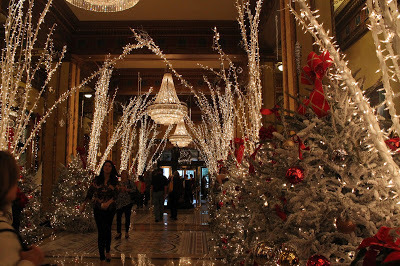
Finally, let's hop on the Canal streetcar and head out to City Park for Celebration in the Oaks. It's nothing like what it used to be before Katrina, but still a fun stop. And while you're there, don't forget to visit the Cajun Papa Noel...
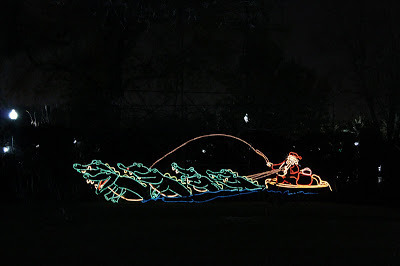
I'm almost ready for Christmas, and hope to get some pictures of my tree and villages up soon. How about you? If you celebrate, are you ready?

Then we'll cross the street and climb over the levee to the Mississippi River, where the steamboat, the Natchez, is decked out for the holidays.

While we're down in the Quarter, we might as well pop over toward Bourbon Street...

And, not too far away, on the Uptown side of Canal, is the old Fairmont Hotel. Now the Roosevelt, it's long been famous in New Orleans for its elaborate Christmas decorations (it's also a lovely hotel, if you're ever looking for someplace to stay).

Finally, let's hop on the Canal streetcar and head out to City Park for Celebration in the Oaks. It's nothing like what it used to be before Katrina, but still a fun stop. And while you're there, don't forget to visit the Cajun Papa Noel...

I'm almost ready for Christmas, and hope to get some pictures of my tree and villages up soon. How about you? If you celebrate, are you ready?
Published on December 17, 2012 14:03
December 9, 2012
Sebastian's London: the Gentleman's Carriage
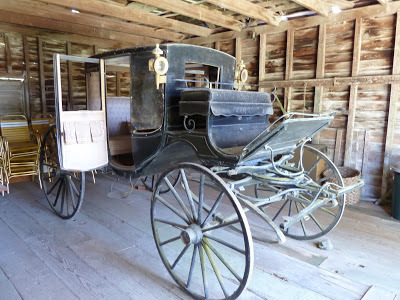
This carriage was actually built in Philadelphia, in 1820, but is essentially the same as the latest smart equipage one would have seen dashing through the streets of Regency London. The first thing I noticed about this carriage is that it is incredibly delicate and tiny. It's a good reminder of just how small people once were. Here's a better view of the interior:
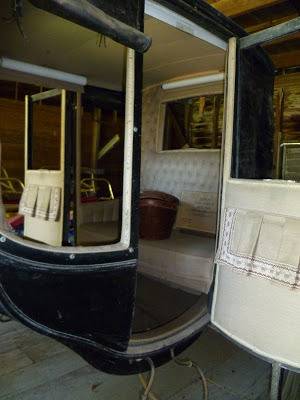
The back is interesting (ignore the junk piled behind it; this wonderfully preserved carriage is sitting gathering dust in an old barn):
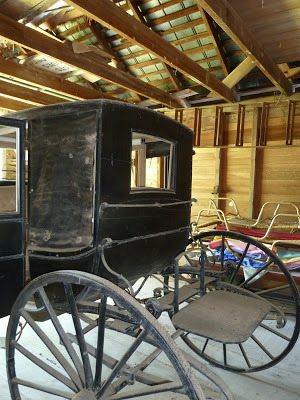
And here's a better look at the driver's seat:
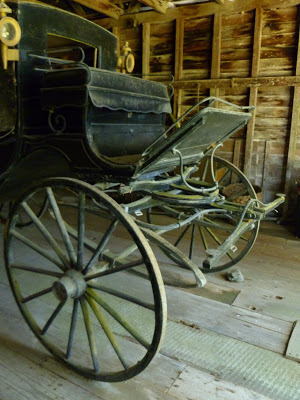
Notice the two brass lamps and the springs. And here's the bill of sale (you can click to enlarge for a better view). It makes fascinating reading.
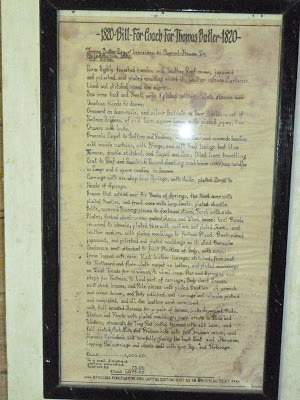
Published on December 09, 2012 19:00
December 2, 2012
Meandering
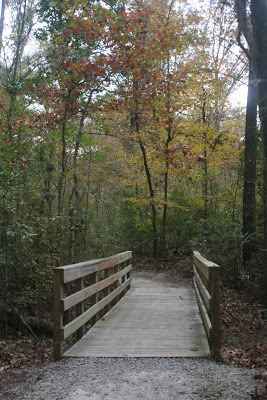
We've been having one of the warmest, prettiest autumns that I can remember here in New Orleans this year. So Steve and I decided to spend some time exploring more of the old historic sites in the area.
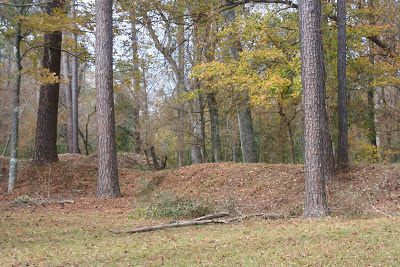
First up was Port Hudson. Yes, it's another Civil War battlefield (for trivia buffs, it was the longest military siege in American history). But there isn't much left to see today beyond some overgrown old earthworks and a cemetery (thousands of men died here). Now it's probably best known for its hiking trails--miles of them, up and down a series of bluffs and ravines that would not have been fun to fight over.
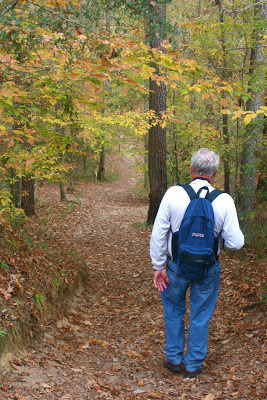
A good way to work off any Thanksgiving excesses!
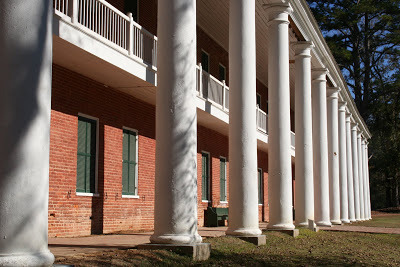
Next up was Centenary College in Jackson, Louisiana. Also another battle site, this one lies just a few miles to the west of our lake house. Once, Centenary College was one of the grandest liberal arts colleges outside of New England. In fact, its main academic building was actually the largest in the country.
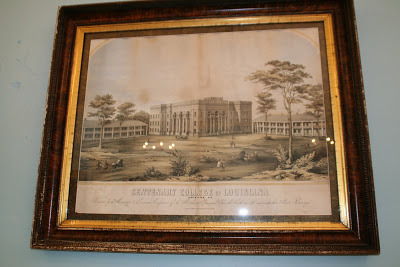
All that's left today is the west dormitory, and another graveyard (the college was turned into a military hospital during the Civil War).
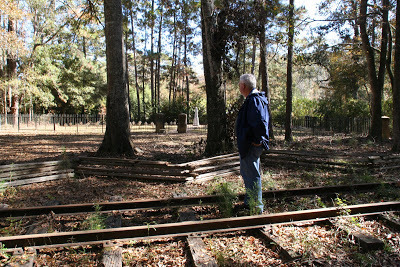
Once, there were so many colleges, preparatory schools, and finishing schools in Jackson that it was known as the "Athens of the South." No longer...
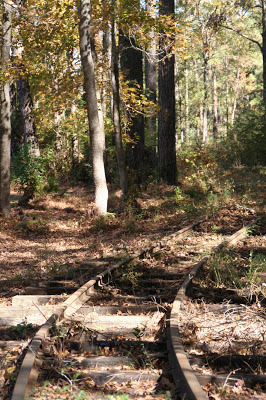
Published on December 02, 2012 21:40
November 28, 2012
Is That a Lightbulb I See Before Me, On the Cover of My New Regency Mystery?
Last week I posted the new cover for What Darkness Brings, due out next March:
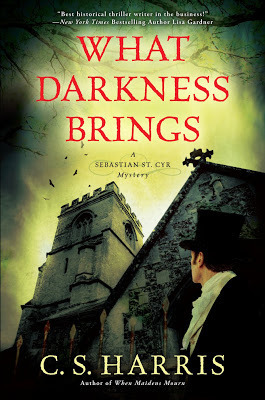
Then one of my observant readers, Jan, pointed out that there was an electric light fixture in the picture!
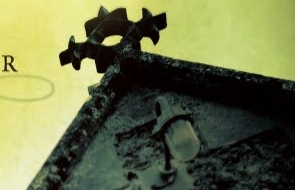
If you only knew how many times I stared at that cover without seeing that light! I suppose my excuse (and it's a feeble one!) is that I was so focused on the male figure in the picture, I didn't see much else. I'm prohibited from showing you the original, but I can say that in the first version of the cover, the male figure did not look anything like I thought he should, to put it mildly. He had short hair, and no Mr. Darcy-like sideburns. He was also as pale as a vampire, his hair looked half gray, and he could have been forty-five years old. I sent them photos of Regency-era men's hairstyles and said, Please can you make his hair much longer and darker? And give him sideburns and more color? And tighten up his neck and give him more pronounced cheekbones and make him look a bit leaner and, and, and...
Yet in all that back and forth, I never looked up at the church gable and said, Oh, by the way, is that a lightbulb?
Of course, once it was pointed out to me, the danged thing stuck out like a proverbial sore thumb. I immediately sent a panicked email to my editor, and we've just this morning received word that, Yes, there is time to photoshop that oops out of the cover. I'll be posting the new version when it becomes available. From now on, my editor and I will be going over future covers with a magnifying glass!
So bless you, Jan. And yes, you most deserve a reward! Please see my response in the comments section of the previous post.
Update: Here's the new, corrected version.
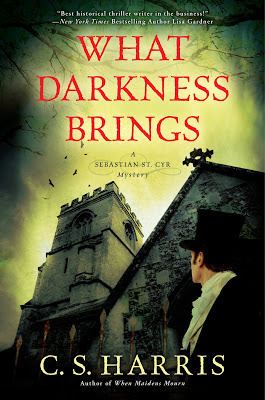


Then one of my observant readers, Jan, pointed out that there was an electric light fixture in the picture!

If you only knew how many times I stared at that cover without seeing that light! I suppose my excuse (and it's a feeble one!) is that I was so focused on the male figure in the picture, I didn't see much else. I'm prohibited from showing you the original, but I can say that in the first version of the cover, the male figure did not look anything like I thought he should, to put it mildly. He had short hair, and no Mr. Darcy-like sideburns. He was also as pale as a vampire, his hair looked half gray, and he could have been forty-five years old. I sent them photos of Regency-era men's hairstyles and said, Please can you make his hair much longer and darker? And give him sideburns and more color? And tighten up his neck and give him more pronounced cheekbones and make him look a bit leaner and, and, and...
Yet in all that back and forth, I never looked up at the church gable and said, Oh, by the way, is that a lightbulb?
Of course, once it was pointed out to me, the danged thing stuck out like a proverbial sore thumb. I immediately sent a panicked email to my editor, and we've just this morning received word that, Yes, there is time to photoshop that oops out of the cover. I'll be posting the new version when it becomes available. From now on, my editor and I will be going over future covers with a magnifying glass!
So bless you, Jan. And yes, you most deserve a reward! Please see my response in the comments section of the previous post.
Update: Here's the new, corrected version.

Published on November 28, 2012 10:50
November 20, 2012
New Cover!
Published on November 20, 2012 13:48
November 19, 2012
Ghosts of Battles Past
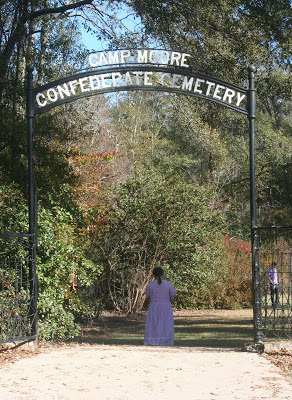
Once upon a time, Camp Moore was the largest Confederate training camp in Louisiana. More than 30,000 troops passed through here on their way to places like Shiloh, Manassas, and Gettysburg. When the Confederate General John Breckinridge (a former vice president of the United States) launched his attempt to retake Baton Rouge in August of 1862, Camp Moore was his staging area. It remained the center of resistance to Federal efforts to conquer Louisiana until the fall of 1864, when the site was finally overrun.
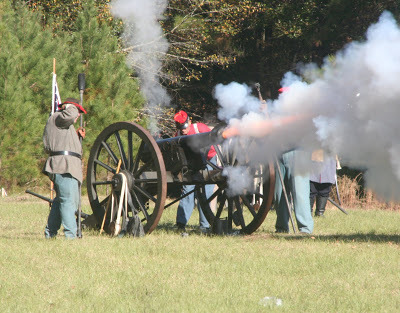
Virtually nothing is left today--just a cemetery, a small but excellent museum, and a lot of ghosts. But once a year it's the site of a Civil War reenactment, and this past weekend Steve and I finally made it up there to watch.
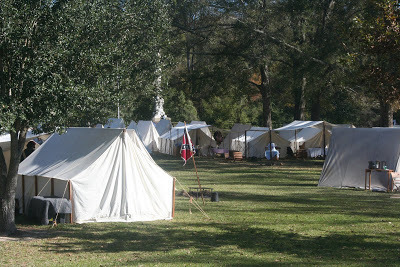
I know people who place reenactments--especially Civil War reenactments--somewhere on a sliding scale between weird and disturbing. But I find them an odd mixture of fun and profoundly thought provoking. For a writer of historical fiction, they can be fascinating. Did you know that artillery changed very little from the time of Sebastian St. Cyr to the Civil war? If you want to write about about canon fire and musket volleys, nothing beats actually hearing them.
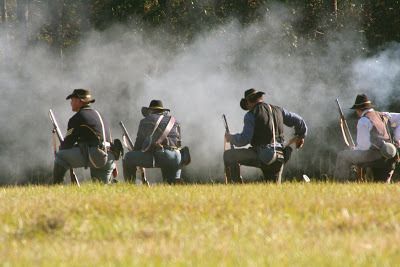
Over 800 men are buried in the cemetery there, most of them laid low not by Yankees but by measles, pneumonia, and dysentery. Many of their names are known, but the locations of the actual graves were lost when the victorious Federals pulled up the wooden grave markers and burned them. How nasty is that?
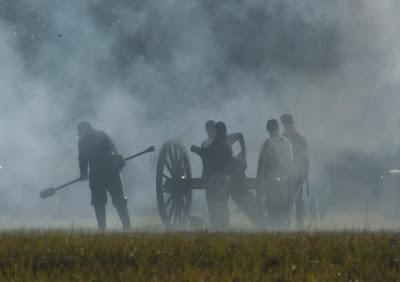
And for the record, the only Civil War veterans I've found on my family tree were all Yankees.
Published on November 19, 2012 11:19
November 16, 2012
The End of Summer
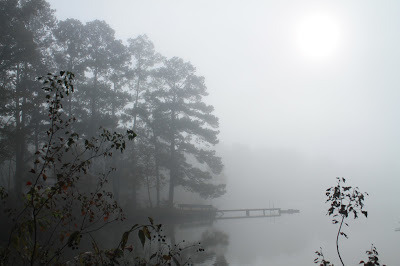
When I was a little girl, my favorite time of year was always summer. Summer meant blue skies, long warm days, no school, lots of hours to play or read or do whatever I wanted to do. I never understood how my mother could say her favorite time of year was autumn. To me, autumn meant school (in case you hadn't noticed, I loathed school), rainy days, cold--everything I didn't like.
Now that I've moved to New Orleans, where my mother was born and raised, I've come to understand why she loved fall. Summers here are brutal, something to be endured and--come hurricane season and the dangerous vortex of August and September--feared. Don't get me wrong; I still love blue skies and warm days and the exuberant burst of glory they bring to my garden. But I've also come to look forward to the softer days of autumn, to clear, crisp mornings and gentle mists and the scent of woodsmoke on a biting breeze.
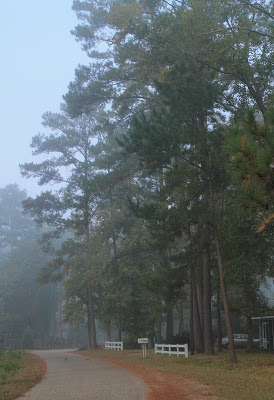
Last weekend, we went up to our lake house. The lake is glorious this time of year, and offers a glimpse of the fall coloration that is so gorgeous farther north but is largely lacking around New Orleans. This post has no real point, except that I changed the photo on my desktop this morning to the one at the top, and thought I'd share it. And I can't even take credit for the pictures, because they're the work of my daughter, Danielle, who crept out with her camera early to catch the morning fog, and then went off again in the golden light of evening.

So what's your favorite time of the year? Do you find it changes depending upon where you live? Or maybe aging has something to do with it...
Published on November 16, 2012 08:20
November 12, 2012
How Author Blurbs Ought to Work--but Rarely Do
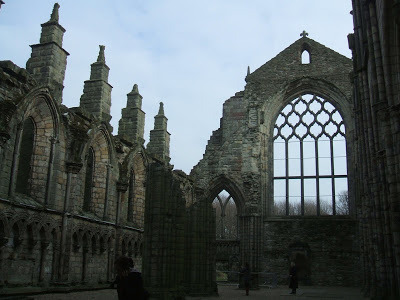
The good news is that the cover of What Darkness Brings is almost ready to be released. The even better news is that the slight delay occurred because a #1 New York Times bestselling author has just written a wonderful blurb for it. She stumbled across the series by accident, read all seven published books in a two-week marathon, and then contacted my editor and offered to write a blurb for What Darkness Brings.
There is something particularly humbling about having such a successful fellow-author so enthusiastically support what you do. I usually take author quotes on books with a grain of salt because I know how many times I have struggled to find something nice to say about a book I've been asked to blurb. But this is the real deal!
So who is it? I can't say just yet. What I can say is that her enthusiasm (along with the series' continued growth in sales) has sparked real excitement at Penguin, and it looks like they're going to put a bit more effort into the promotion of this next book.
But I can give you a sneak peek at the quote: "Best historical thriller writer in the business! Sebastian St. Cyr is everything you could want in a Regency-era nobleman-turned-death investigator: uncannily clever, unwaveringly reserved and irresistibly sexy. The entire series is simply elegant."
Pretty neat, huh?
Published on November 12, 2012 09:49
November 6, 2012
Hunkering down on Hunker
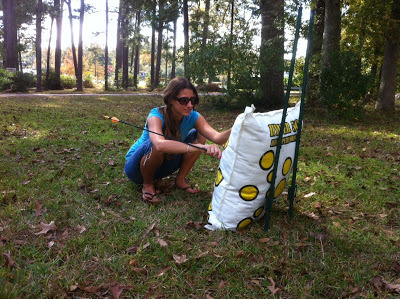
A writer can use everyday words such as walk, look, or think hundreds of times in a book, and no one will noticed. But you need to be more careful with "shiny" words; less common words such as serendipity or ubiquitous draw attention to themselves and are therefore memorable. That all seems self evident; but a problem arises when an everyday word for the author is a "shiny" word for most readers. Which brings me to hunker.
Sebastian hunkers down a lot, generally beside dead bodies or to examine evidence. Sebastian may not be a dandy, but we wouldn't want to give Jules Calhoun the vapors by having Sebastian dirty his doeskin breeches by kneeling. He could squat, which is after all essentially another word for hunker. But I spent so many years camping as a kid in Idaho and Oregon that squat brings to mind someone answering a call of nature behind a tree. Not an image I care to evoke.
There is crouch, and Sebastian does sometimes crouch--especially when he needs to examine two bodies in a row. But crouch is a word that for me carries connotations of hiding--so Sebastian is more likely to crouch down behind a wall when some bad guy is shooting at him. He could bend or stoop, but those words are generally used to imply a motion from the waist, not a lowering of the entire body.
That leaves us with hunker. Some people think of hunker as a modern, uniquely American word, but it is not. It's actually a rather old word, from the Norse huka, which meant--yes--to squat. It is thought to have come to English via Scotland, and was in common enough usage to make it into the dictionaries by the beginning of the eighteenth century. This is important; you'd be amazed at the number of words we use that Sebastian's contemporaries didn't--so I can't.
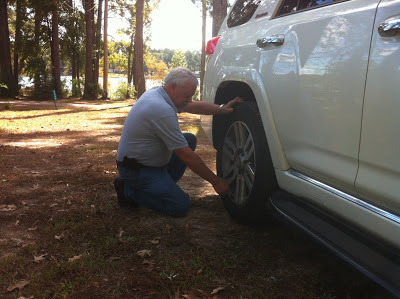
I actually use hunker a fair amount in my everyday speech, which is I suppose why I was surprised when I learned that other people see it as a "shiny" word--shiny enough that my use of hunker is even a subject of conversation on Goodreads (really!). In speech, I probably use it most often in its other meaning--best illustrated by the sentence, "Rather than evacuate for the hurricane, we decided to hunker down in place." But I also use it rather than squat because--as I said--squat is one of those words I avoid except in a certain context.
At first I considered altering my habits and making an effort to avoid a word that leaps off the page for some of my readers. But I've now decided, no. Sebastian will continue to hunker down beside murder victims and dying witnesses. And, who knows, maybe he'll help to popularize a word that really does deserve to be better known.
(By the way, the photo of Steve above shows another advantage of the word hunker, since this position is quite common but is technically a half-kneel, half-squat for which there is no word. A knaut?)
Published on November 06, 2012 08:44
October 31, 2012
Boo!

I know I've been a bad blogger lately. I blame it on a combination of frantic writing and the distraction of following the current political race.
This week I've also been reading the galleys for the paperback edition of When Maidens Mourn. Penguin still hasn't released the cover of What Darkness Brings, but hopefully they will soon.
And here is this year's pumpkin. I tried to take a photo of it lit but I couldn't get it to turn out right. I guess I should have taken it outside like the ones above, but it was COLD out there! Thankfully by tonight it had warmed up enough that we could open the door for the trick-or-treaters.

Happy Halloween, everyone!
Published on October 31, 2012 20:57

